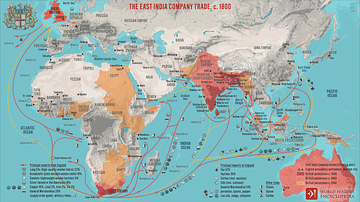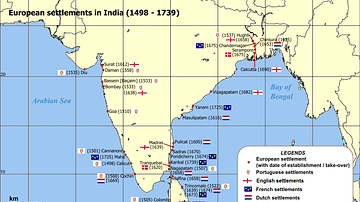Server Costs Fundraiser 2024
Review

| Rating: | |
|---|---|
| Title: | Smoke and Ashes: Opium's Hidden Histories |
| Author: | Amitav Ghosh |
| Audience: | General Public |
| Difficulty: | Easy |
| Publisher: | Farrar, Straus and Giroux |
| Published: | 2024 |
| Pages: | 416 |
"Smoke and Ashes: Opium’s Hidden Histories" is a sweeping and jarring work of how opium became an insidious capitalistic tool to generate wealth for the British Empire and other Western powers at the expense of an epidemic of addiction in China and the impoverishment of millions of farmers in India. The legacy of this “criminal enterprise,” as the author puts it, left lasting influences that reverberate across cultures and societies even today.
Written in engaging language, Smoke and Ashes is a scholarly follow-up to the author’s famous Ibis trilogy, a collection of fiction that uses the opium trade as its backdrop. In Smoke and Ashes, the author draws on his years-long research into opium supplemented by his family history, personal travels, cross-cultural experience, and expertise in works of historical verisimilitude. Composed over 18 chapters, the author delves into a diverse set of primary and secondary data, including Chinese sources. He also brings a multidimensional angle to the study by highlighting the opium trade's legacy in diverse areas such as art, architecture, horticulture, printmaking, and calligraphy. 23 pictorial illustrations serve as powerful eyewitness accounts to the discourse.
This book should interest students and scholars seeking historical analysis based on facts on the ground instead of colonial narratives. Readers will also find answers to how opium continues to play an outsize role in modern-day conflicts, addictions, corporate behavior, and globalism.
Amitav Ghosh’s research convincingly points out that while opium had always been used for recreational purposes across cultures, it was the Western powers such as the British, Portuguese, the Spaniards, and the Dutch that discovered its significant potential as a trading vehicle. Ghosh adds that colonial rulers, especially the British, often rationalized their actions by arguing that the Asian population was naturally predisposed to narcotics. However, it was British India that bested others in virtually monopolizing the market for the highly addictive Indian opium in China. Used as a currency to redress the East India Company (EIC)’s trade deficit with China, the opium trade by the 1890s generated about five million sterling a year for Britain. Meanwhile, as many as 40 million Chinese became addicted to opium. As the Chinese tried to control or prohibit opium's entry into the country, Britain waged two wars against it, forcing China not only to accept opium but also to cede control of Hong Kong and part of Shanghai.
Eastern India became the epicenter of British opium production. Workers in opium factories in Patna and Benares toiled under severe conditions, often earning less than the cost of production while their British managers lived in luxury. Ghosh asserts that opium farming permanently impoverished a region that was an economic powerhouse before the British arrived. Ghosh’s work echoes developmental economists such as Jonathan Lehne, who has documented opium-growing communities' lower literacy and economic progress compared to their neighbors.
Ghosh states that after Britain, “the country that benefited most from the opium trade” with China, was the United States. American traders skirted the British opium monopoly by sourcing from Turkey and Malwa in Western India. By 1818, American traders were smuggling about one-third of all the opium consumed in China. Many powerful families like the Astors, Coolidges, Forbes, Irvings, and Roosevelts built their fortunes from the opium trade. Much of this opium money, Ghosh shows, also financed banking, railroads, and Ivy League institutions. While Ghosh mentions that many of these families developed a huge collection of Chinese art, he could have also discussed that some of their holdings were most probably part of millions of Chinese cultural icons plundered by colonialists.
Ghosh ends the book by discussing how the EIC's predatory behaviors have been replicated by modern corporations, like Purdue Pharma, that are responsible for the opium-derived OxyContin addiction. He adds that fossil fuel companies such as BP have also reaped enormous profits at the expense of consumer health or environmental damage.
Perhaps one omission in this book is that the author does not hold Indian opium traders from Malwa, such as the Marwaris, Parsis, and Jews, under the same ethical scrutiny as he does to the British and the Americans. While various other works have covered the British Empire's involvement in the opium trade, most readers would find Ghosh's narrative of American involvement to be eye-opening. Likewise, his linkage of present-day eastern India's economic backwardness to opium is both revealing and insightful.
Winner of India's highest literary award Jnanpith and nominated author for the Man Booker Prize, Amitav Ghosh's works concern colonialism, identity, migration, environmentalism, and climate change. In this book, he provides an invaluable lesson for political and business leaders that abdication of ethics and social responsibility has lasting consequences impacting us all.
About the Reviewer
Cite This Work
APA Style
Chaudhuri, S. (2024, June 03). Smoke and Ashes: Opium's Hidden Histories. World History Encyclopedia. Retrieved from https://www.worldhistory.org/review/454/smoke-and-ashes-opiums-hidden-histories/
Chicago Style
Chaudhuri, Shankar. "Smoke and Ashes: Opium's Hidden Histories." World History Encyclopedia. Last modified June 03, 2024. https://www.worldhistory.org/review/454/smoke-and-ashes-opiums-hidden-histories/.
MLA Style
Chaudhuri, Shankar. "Smoke and Ashes: Opium's Hidden Histories." World History Encyclopedia. World History Encyclopedia, 03 Jun 2024. Web. 26 Jul 2024.




